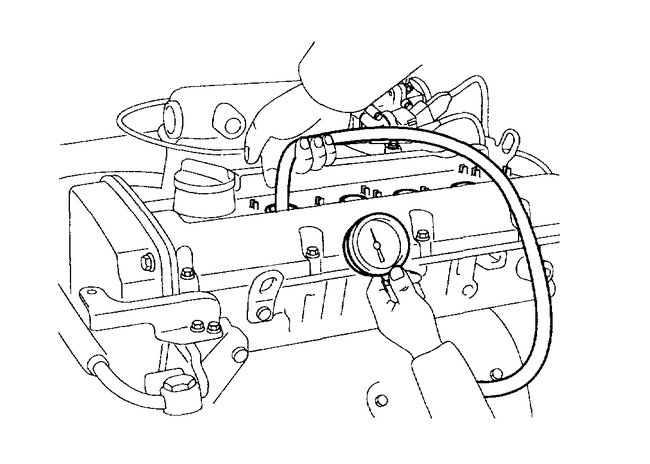Welcome to 2CarPros.
A bad radiator wouldn't cause water to get into the cylinder. You most likely have a bad head gasket. If the vehicle was overheated as a result of the radiator, it may had caused it. Normally I would suggest checking for spark and fuel to the engine, but coolant in the cylinder is indicating something different. Also, is there anything that leads you to believe the timing belt may have broken? When trying to start it, does the engine sound like it is turning much faster than normal?
Now, what I need you to do is check engine compression. If the head gasket has failed, you will find the compression to be lower. Also, I realize most people don't own a compression gauge, but most parts stores will lend or rent one to you.
Here is a link that shows in general how it is done:
https://www.2carpros.com/articles/how-to-test-engine-compression
Here are the directions specific to your vehicle. These directions include expected pressures. The attached pics correlate with the directions. Note that you can not complete numbers 1 and 2. However, the pressures should be close to the manufacturer's specs.
_____________________________________
COMPRESSION
1. Warm up and stop engine Allow the engine to warm up to normal operating temperature.
2. Remove ignition coils.
3. Remove spark plugs. Using a 16 mm plug wrench, remove the 4 spark plugs.
pic 1
4. Check cylinder compression pressure.
a. Insert a compression gauge into the spark plug hole.
b. Fully open the throttle.
c. while cranking the engine, measure the compression pressure.
NOTE: Always use a fully charged battery to obtain engine speed of 250 rpm or more.
d. Repeat steps (a) through (c) for each cylinder.
NOTE: This measurement must be done in as short a time as possible.
Compression pressure 1,500 kPa (15.3 kgf/cm2, 218 psi)
Minimum pressure: 1,000 kPa (10.2 kgf/cm2, 145 psi)
Difference between each cylinder 100 kPa (1.0 kgf/cm2, 15 psi) or less
e. If the cylinder compression in 1 or more cylinders is low, pour a small amount of engine oil into the cylinder through the spark plug hole and repeat steps (a) through (c) for cylinders with low compression.
If adding oil helps the compression, it is likely that the piston rings and/or cylinder bore are worn or damaged.
If pressure stays low, a valve may be sticking or seating is improper, or there may be leakage past the gasket.
5. Reinstall spark plugs.
6. Install ignition coils.
__________________________________________________________
Let me know what you find or if you have other questions.
Take care,
Joe
Image (Click to make bigger)
Sunday, July 14th, 2019 AT 9:32 PM




